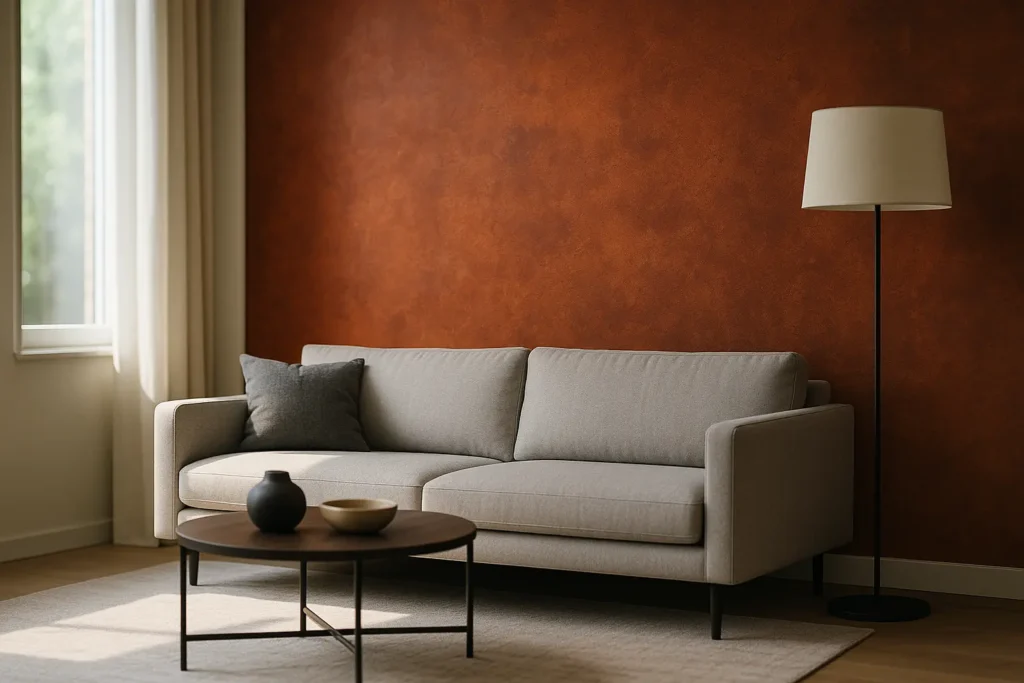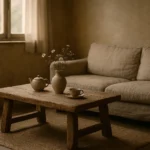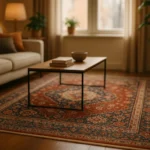In the ever-evolving realm of interior design, the concept of accent walls has been a steadfast companion. As trend cycles ebb and flow, many of us ponder whether accent walls are still in vogue or if they’ve become relics of a bygone era. Today, we embark on a journey to unravel this mystery. Join us as we delve into the nuances of using accent walls across various rooms, from the living room to the kitchen, and explore the transformative power they hold in the world of decor.
The Living Room: A Canvas for Color and Creativity
The living room, often the core of our homes, offers ample opportunity to experiment with design aesthetics. In this vibrant space, an accent wall can serve as a bold statement or a subtle complement, depending on the desired atmosphere. By utilizing paint, wallpaper, or other creative mediums, we can craft a feature wall that resonates with our personal style.
When considering an accent wall, the selection of color is pivotal. A rich white or muted grey might create a sense of calm, while a bold blue or vivacious red can invigorate the space. We must also consider the room’s furniture and existing decor to ensure our accent wall harmonizes with the environment, rather than overwhelming it.
Texture is another essential element in designing an accent wall. Whether we opt for a sleek paint finish, a rustic stone façade, or a dynamic geometric wallpaper, the texture can add depth and interest to our living room. This tactile element helps to draw the eye, creating a natural focal point and enhancing the room’s overall aesthetic.
Ultimately, the living room provides a versatile setting for accent walls, allowing us to express creativity and adapt the space to suit our evolving tastes. While some may argue that this design choice is outdated, the ever-expanding array of materials and techniques ensures that accent walls remain a contemporary and flexible option for enhancing our homes.
The Bedroom: A Sanctuary of Personal Expression
As a retreat from the world, the bedroom serves as a blank canvas for personal expression and tranquility. An accent wall in this intimate space can be both a reflection of our personality and a tool to enhance relaxation. By carefully selecting colors and materials, we can transform our bedroom into a sanctuary that caters to our unique preferences.
In contrast to the lively tones that may characterize our living room, the bedroom often benefits from softer hues. Gentle pastels, such as lavender or sage, can foster a calming atmosphere. Meanwhile, a deep navy or forest green might offer a sense of depth and sophistication. White accents or contrasting trim can further elevate the design, ensuring a cohesive and polished finish.
Beyond color, the design and material of the accent wall play a crucial role in setting the bedroom’s tone. A wallpaper featuring delicate floral motifs or a textured plaster finish can add an element of intrigue without overwhelming the space. By considering both aesthetics and functionality, we can craft an accent wall that seamlessly aligns with our vision for the bedroom.
In the realm of interior design, the question of whether accent walls are outdated is subjective. For many, these walls remain a timeless option, allowing for creative expression and the transformation of any space into a personalized haven.

The Kitchen: A Culinary Space Reimagined
In recent years, the kitchen has evolved beyond its traditional role as a mere cooking space. It has transformed into a hub of activity and social interaction, making design elements like accent walls increasingly relevant. These walls can serve as focal points, infusing the kitchen with warmth, character, and a splash of modernity.
Given the kitchen’s functional nature, it’s essential to select materials that are both stylish and practical. Paint with a gloss finish, for example, is easy to clean and maintain, making it an excellent choice for a kitchen accent wall. Tile and stone also offer durability while adding texture and visual intrigue.
When choosing a color palette, consider the kitchen’s existing cabinets and appliances. Neutral tones such as taupe or cream create a timeless look, while a vibrant color like teal or mustard can inject a sense of energy and fun. Incorporating white elements, like open shelving or sleek countertops, can enhance the contrast and provide a crisp, clean aesthetic.
As we explore the potential of accent walls in the kitchen, we must remember that the goal is to create a space that is both functional and aesthetically pleasing. By thoughtfully selecting colors, materials, and placement, we can craft a culinary environment that reflects our lifestyle and design sensibilities.
In our exploration of accent walls across various spaces in our homes, it becomes evident that these design elements hold a timeless appeal. While trends may fluctuate, the ability of accent walls to transform and personalize a space cannot be overstated.
Whether we choose to embellish a living room, enhance a bedroom, or redefine a kitchen, accent walls offer endless possibilities for creativity and expression. While some may view them as outdated, we argue that their adaptability and enduring charm ensure they remain a staple in modern interior design.
As we continue to refine and personalize our living spaces, let us embrace the versatility of accent walls. In doing so, we can create homes that are not only visually captivating but also truly reflective of who we are.
FAQ
What are accent walls and how are they used in interior design?
Accent walls are walls within a room that are painted or decorated differently from the others. They are often used to create a focal point, highlight architectural features, or introduce a pop of color or texture to a space.
Are accent walls still considered trendy in modern home design?
Yes, accent walls continue to be a popular design choice. They offer a simple yet effective way to inject personality and style into a room without overwhelming the space.
What are some contemporary alternatives to traditional accent walls?
Modern alternatives to traditional accent walls include textured wall panels, bold wallpapers, or murals. Some homeowners also opt for accent ceilings or floors to achieve a similar effect without focusing solely on walls.
Which rooms are best suited for accent walls?
Accent walls are versatile and can be used in any room. Common choices include living rooms, bedrooms, and dining areas. They can also be effective in entryways or hallways to create a welcoming atmosphere.
How do I choose the right color or pattern for an accent wall?
When selecting a color or pattern, consider the overall theme and color scheme of the room. It’s important to choose a hue or design that complements rather than clashes with the existing decor. Neutral shades can add subtle interest, while bold colors make a statement.



